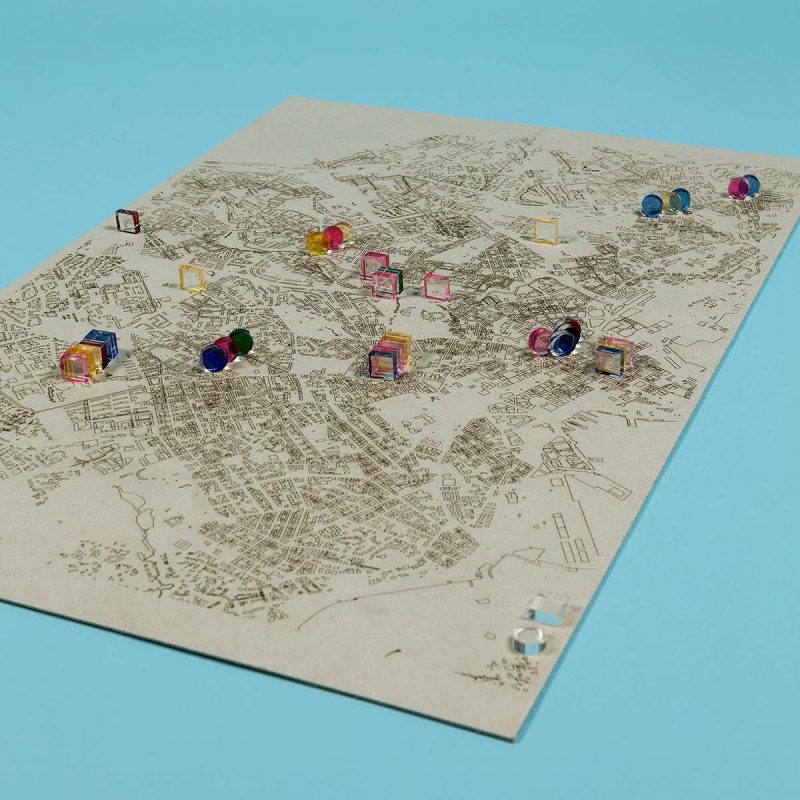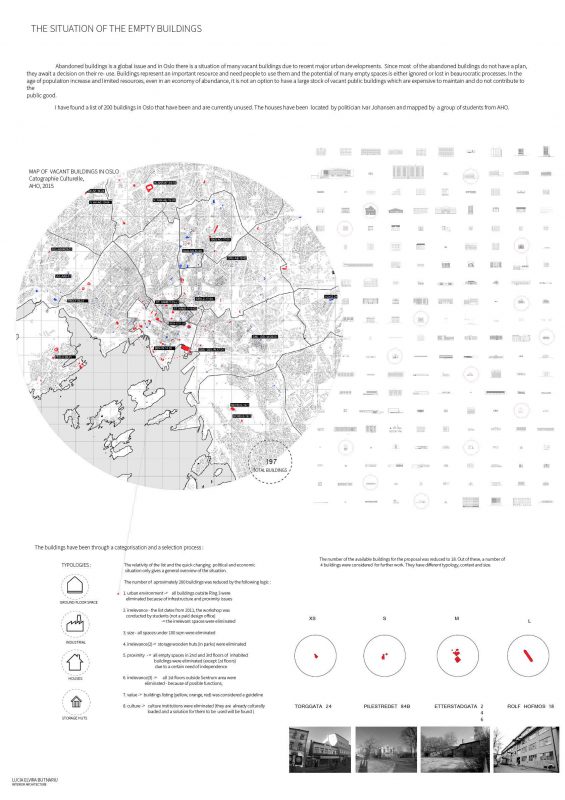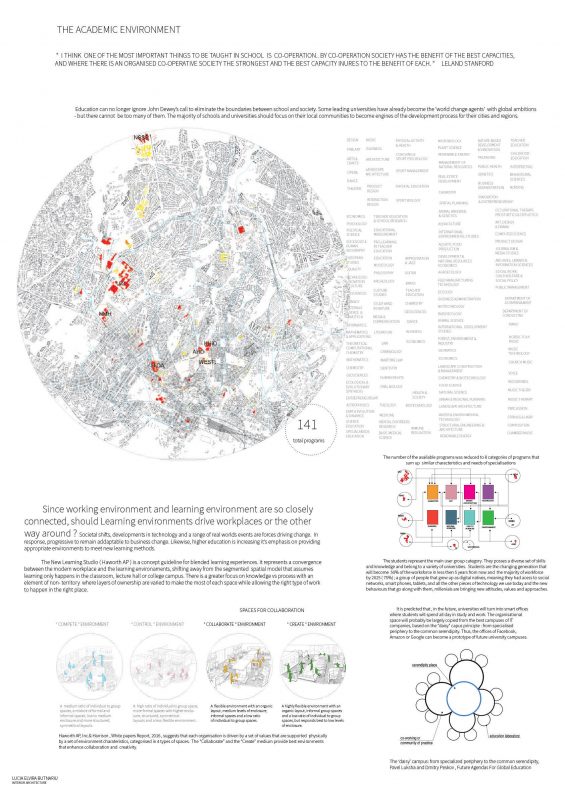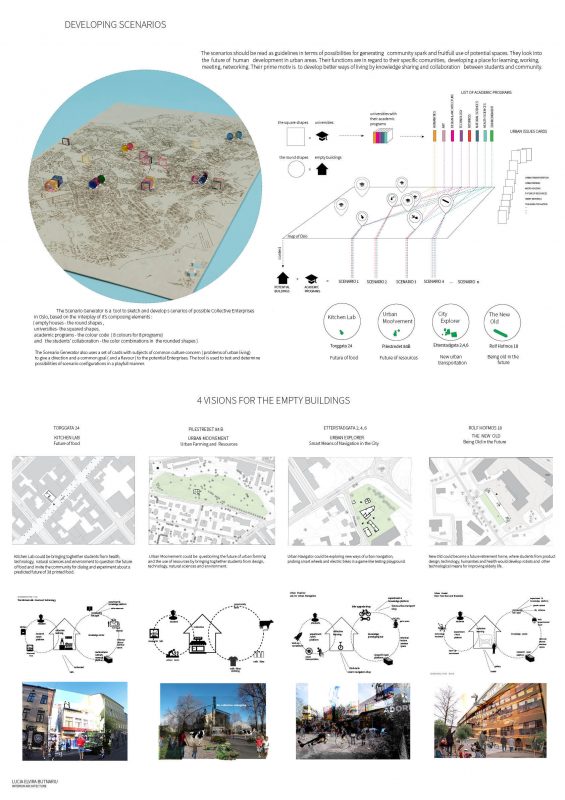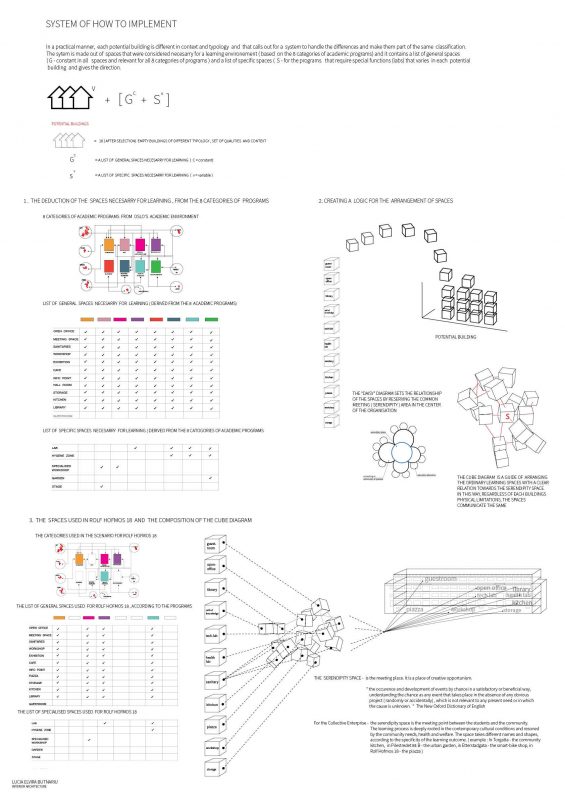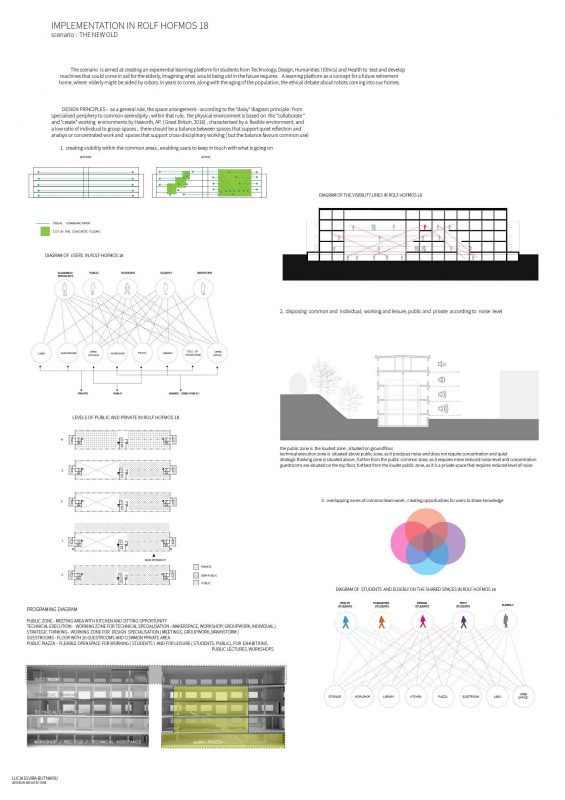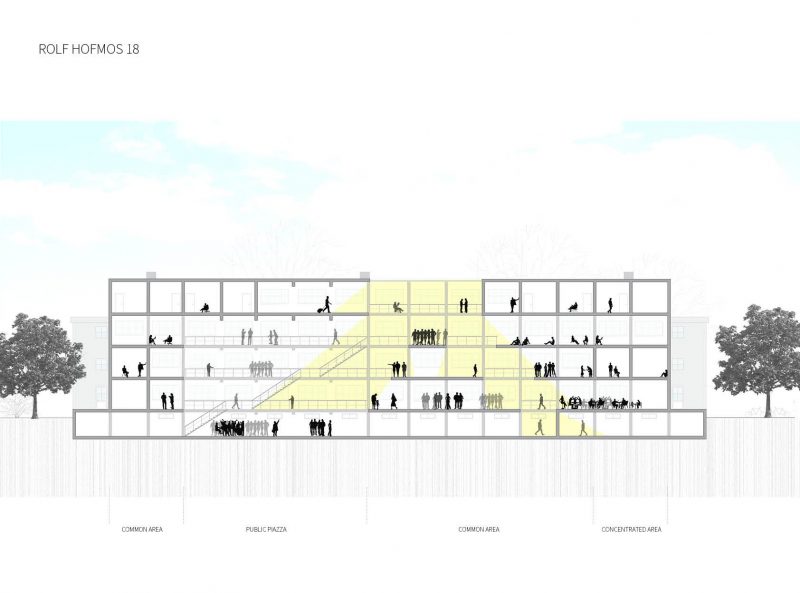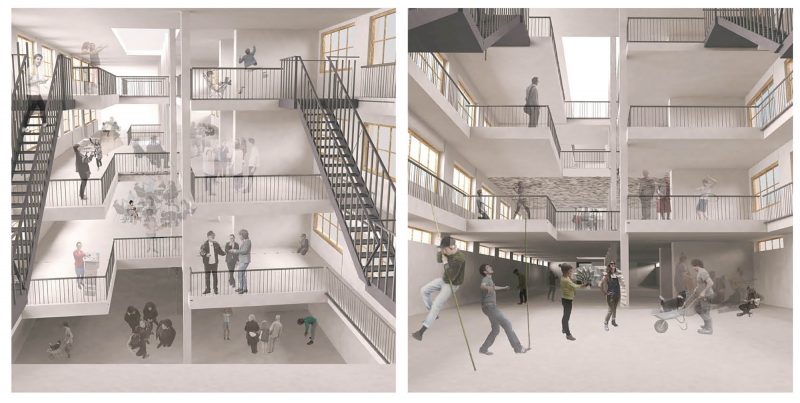
The Collective Enterprise
Spring 2016
By Lucia Elvira Butnariu (website)
- MA2
- Students:
Karin Knott, Maziar Raein
The Collective Enterprise is developing a strategy to use the empty buildings in Oslo as a network of creative incubator spaces, for student collaborative, community oriented, projects. The project is consciously supporting a culture of collaboration and innovation, inviting people to share knowledge, to teach others and to learn from their community members.
I am investigating the functions of spaces for working and learning, meeting and collaboration, and it proposes a conceptual spatial arrangement system that can be adapted and applied into a variety of potential spaces (empty buildings).
In modern knowledge societies, universities play an important role in achieving social progress and economic growth. Their traditional missions of teaching and research are being broadened to include Third Mission activities that facilitate the engagement with society and industry. The Collective Enterprise is positioned close to this idea, proposing a space where students from Oslo’s Universities, business specialists and academic communities come toghether to address issues of common concern, to improve interaction between higher education and communities.
In practice, the project seeks to create a platform and a framework to generate, apply and use knowledge and other university capabilities outside academic environments, developing citizenship attributes.
Essentially, the project proposes a network of capabilities incubators to create innovative and engaging learning environments, and solutions for present and future communities. In the Collective Enterprise, all students equally teach and learn, aquire knowledge and skills while working on current issues of our culture: technology, health and environment.
Based on the research information that more than 80 per cent of learning happens informally, The Collective Enterprise is taking the classroom out into the city, placing it in different potential empty spaces, creating a more dynamic way of learning by mixing disciplines in student groups and involving the universities and community in dealing with real issues.
Firts part of the process consisted of defining the strategy, meeting the community by bringing toghether the academic programs and the potential spaces. The second part was breaking it down into elements: selecting the buildings, selecting the programs, reading the context and diagramatically developing possibilities of use.
The scenarios developed should be read as guidelines in terms of possibilities for generating community spark and fruitfull use of the potential spaces .
All four schemes are oriented towards innovation and future technologies, functions are ou lined to be n regard to their specific communities, creating a place looking into the future of human development in urban areas. The spaces and their of learning, working, meeting and networking.
Their prime motive is to develop better ways of learning by knowledge sharing and collaboration between students and between students and community. A spatial arrangement system was developed in order to materialise the physical informal learning platform in an empty building, addaptable to all empty buildings.
The last scenario, Rolf Hofmos 18, is tested in a physical manner in order to probe principles of the spatial arrangement for a Collective Enterprise.
